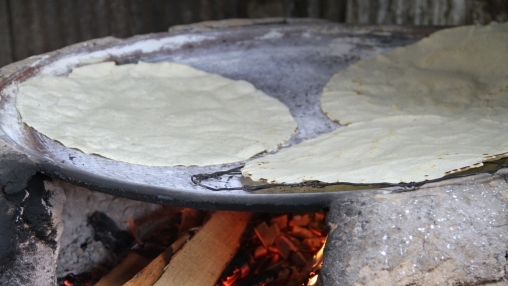In Central America, making tortillas on a plancha (flat griddle) over a smoky fire is a way of life. Typically, women spend nearly four hours a day preparing tortillas, frijoles (fried bean paste), and guisados (stew) for their families, routinely inhaling air pollutants from burning firewood.
The consequences are deadly. Every year, 37,000 premature deaths are caused by household air pollution. Women and children are most affected. This kind of pollution is linked to pneumonia in children, low birth weight, impaired cognitive ability, and chronic lung disease in women.
According to the World Health Organization (WHO), household air pollution is one of the top five risk factors causing premature deaths and illness in Guatemala, Honduras, and Nicaragua where nearly 86% of firewood users in the region are concentrated. This indoors pollution is a global problem, especially acute in low-income countries; worldwide, 2.8 billion cook with biomass, and about 4 million die prematurely as a result.
Why most families don’t use improved cookstoves?
A new World Bank-ESMAP study, What Have We Learned from Household Biomass Cooking in Central America recommends a regional approach to solve the problem. How? By promoting the use of improved cookstoves. Such stoves are designed with a more efficient combustion chamber, reinforced plancha, and a chimney. With proper use and maintenance, they produce less or no smoke, use less firewood, and are better looking than traditional stoves.
However, less than 10% of the 20 million Central Americans, who rely on firewood, use improved cookstoves. Not everyone can afford one. Typical costs range between $60-160, too much for more than half of the 40 million who live on less than two dollars a day and almost a third who live on less than $1.25 a day. In contrast, a traditional cookstove costs about $3-10.
An improved cookstove in most parts of Asia or Africa costs about $5-20, but the design will not suit the unique demands of a large surface area for placing multiple pots and making tortillas.
Liquefied petroleum gas (LPG) is not a viable option for many of the poor either. Except El Salvador, no other country in the region offers subsidies to household LPG consumption. In rural areas, LPG is not always available due to poor road conditions.
Potential fuel savings from an improved cookstove are not always an incentive for families with easy and free access to firewood. Families view smoke as a nuisance but often don’t consider the associated serious health risks in their choice of cookstoves. Further, local clinics may not be capable of communicating the negative health impacts of smoke.
The issue is larger than cooking solutions for families. It involves public health, gender, education, and environmental management.

